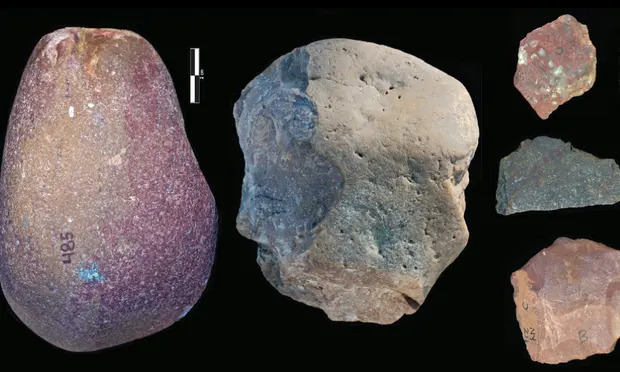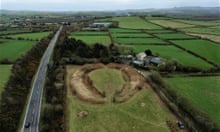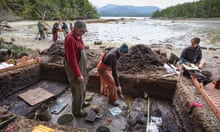2023 Feb 09
–
The discovery of stone tools dating back nearly 3m years has raised questions about which hominin species was behind the ancient technology.
The artefacts, found at a site in Kenya, are thought to be the oldest known example of a specific set of stone tools used for butchery and pounding plant material. The emergence of the so-called Oldowan toolkit is viewed as a milestone in human evolution and was assumed to be an innovation of our ancestors.
However, the latest excavation revealed a pair of massive molars belonging to Paranthropus, a muscular-jawed hominin on a side branch of our evolutionary tree, alongside the tools.
“The assumption among researchers has long been that only the genus Homo, to which humans belong, was capable of making stone tools,” said Prof Rick Potts, of the Smithsonian National Museum of Natural History, a senior author of the study. “But finding Paranthropus alongside these stone tools opens up a fascinating whodunnit.”
The site in western Kenya, Nyayanga, also yielded the oldest evidence of hominins consuming very large animals, with at least three individual hippos unearthed. Two of the incomplete skeletons included bones that showed signs of butchery. There were also antelope bones that showed evidence of flesh being sliced away or being crushed to extract bone marrow. The animals may have been scavenged rather than hunted.
Analysis of wear patterns of 30 of the stone tools showed they had been used to cut, scrape and pound animals and plants. The artefacts date to about 2m years before humans mastered fire, so the toolmakers would have eaten the hippo and antelope meat raw, possibly pounding it into something like a tartare to make it easier to chew.
The research, published in the journal Science, dated the artefacts to between 2.6m and 3m years old using radioisotope analysis and a variety of other techniques. Previously, crude stone tools have been dated to as early as 3.3m years old, before the emergence of the Homo genus. But Oldowan tools, including those from the latest excavation, were a significant upgrade in sophistication, and scientists believe these opened up new opportunities. The tools included hammerstones, used for pounding, and flakes, used to cut and scrape.
“With these tools you can crush better than an elephant’s molar can and cut better than a lion’s canine can,” Potts said. “Oldowan technology was like suddenly evolving a brand new set of teeth outside your body, and it opened up a new variety of foods on the African savannah to our ancestors.”
Prof Fred Spoor, of UCL (University College London), who was not involved in the research, said the findings might prompt a rethink of Paranthropus’s capabilities. “Paranthropus suffers from an image of being a stupid grazer on the landscape,” he said. “The perception is heavily influenced by gorillas and so we think of them as big, fat creatures sitting around eating celery all day. The possibility that Paranthropus made these tools is quite intriguing.”
However, Spoor added that it was not possible to discount the alternative explanation that the teeth belonged to a victim rather than the hunter. “We eat pork cheeks and those Paranthropus creatures had very big chewing muscles,” he said. “I’m sure they were very tasty.” [?!]
–
Topics

















